In the archives of Augustus John at the University of
Liverpool there is an invitation (August 1931) to Charles Reilly to stay with John at his country home of Fryern Court, Fordingbridge for a portrait to be painted. John was looking to build a new studio in the grounds of his home and so having an eminent architect as a sitter, he asked his advice.

Augustus John – Portrait of Charles Reilly, 1931.
While staying with his old friend and colleague Augustus John at Fryern Court, Fordingbridge, during the early autumn of 1931 in order to sit for his portrait, Reilly wrote a series of letters to his wife. In one of these he states ‘I have suggested his (John) building a large new studio, modern, in ferro concrete, and he likes the idea.’
There is no other documentary evidence to suggest that Reilly had any other hand in what eventually was built. John’s chosen architect, Christopher Nicholson – younger son of the painter Sir William Nicholson – produced two designs. The first was a looser interpretation of Modernist principles , and the second and executed design was, as David Dean notes, ‘built to a precise mathematical grid, the reinforced concrete frame has been raised for maximum light on stilts, in the approved Corbusian manner. †
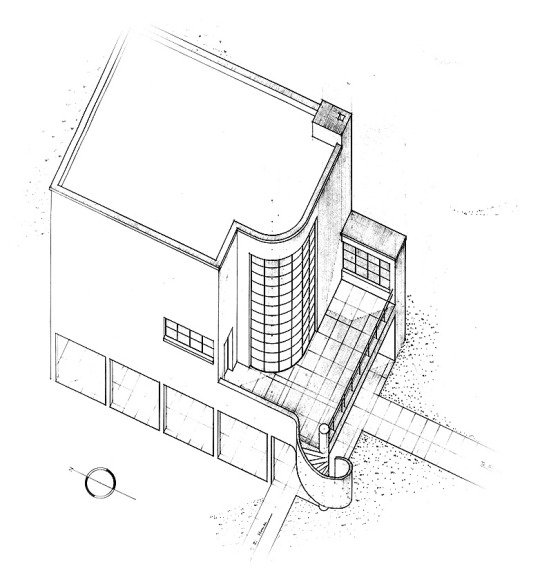
Christopher Nicholson’s second design for John’s Studio.
Augustus John’s studio was Nicholson’s first major commission and an opportunity to put into practice the ideas he had been developing since leaving Cambridge. In 1930 Nicholson visited Paris, where he had the opportunity to see modern studio buildings by Mallet-Stevens, Le Corbusier, Lurcat and Perret. One of the most striking – and an important source for the John studio – was the studio-house built by Le Corbusier for Ozenfant House near the Pare Montsouris. ‡
Nicholson then had his architectural practice at 12 Old Church Street, a one-roomed office over a chemist’s shop, shared with his partner, Hugh Casson. ♠
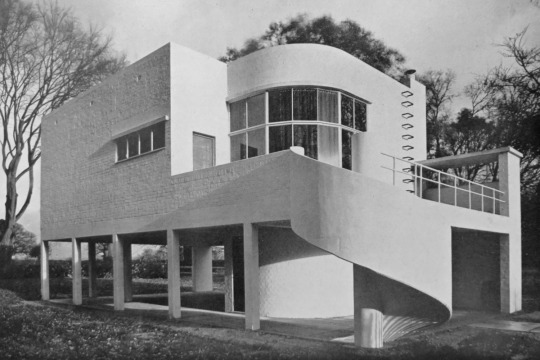
The finished studio in 1933.
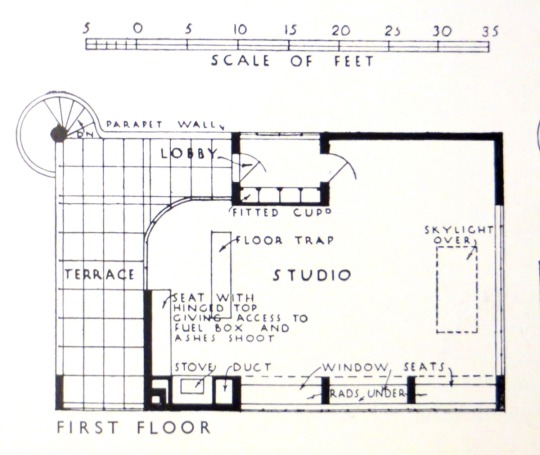
Christopher Nicholson’s plan for the upstairs of the studio.
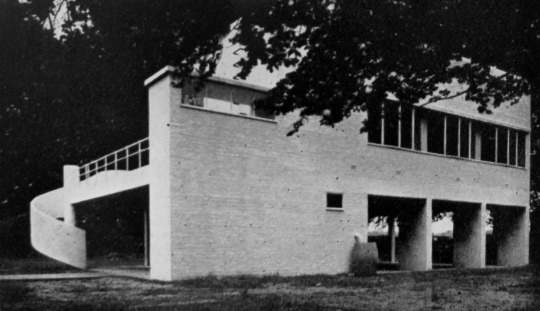
In Le Corbusier’s style, Nicholson design the building lifted up from the ground with only a picture store under.

Christopher Nicholson’s plan for the ground floor of the studio.
When the studio was completed John wrote to Reilly in Febuary 1935, about the studio being a success and how John was working with renewed energy.
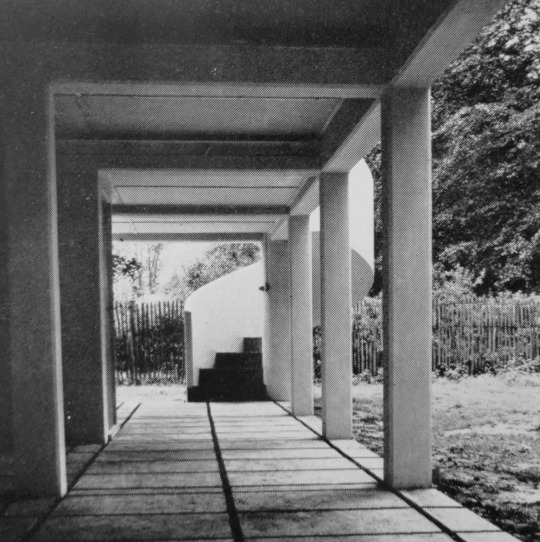
Augustus John lived in Fryern Court from 1927 until his death, at the age of 83, in 1961. At the height of his career, the charismatic Welshman was considered one of Britain’s leading portrait painters. He was a well-known figure in the village of Fordingbridge and one of his favourite town watering holes now bears his name, having formally been known as the Railway Hotel.
The studio was located in the corner of the garden away from the main house of Fryern Court, so that the views and light of the countryside could flood into the windows.
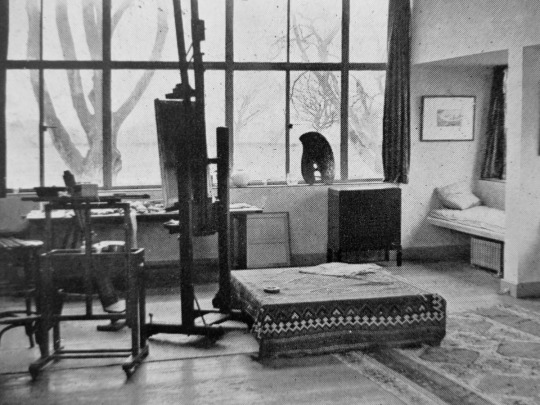
Interior of Augustus John’s Studio.
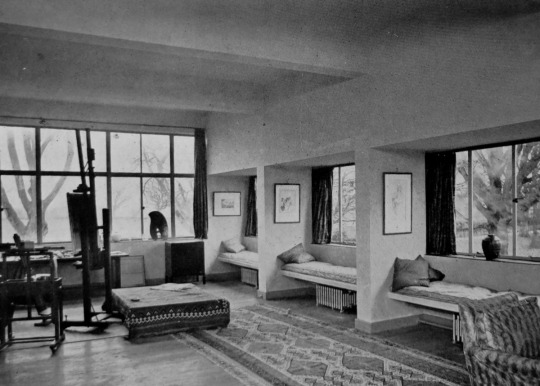
Interior of Augustus John’s Studio.
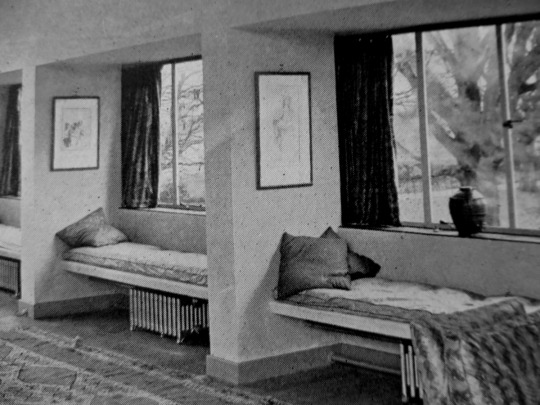
Interior of Augustus John’s Studio with the radiators under the seating.
In 2011 a fire ripped through the main house. More than 60 firefighters were called to Fryern Court near Fordingbridge, the fire crews used water from the swimming pool of the Grade II listed building to douse the flames as they engulfed the roof and first floor. The studio was unaffected.
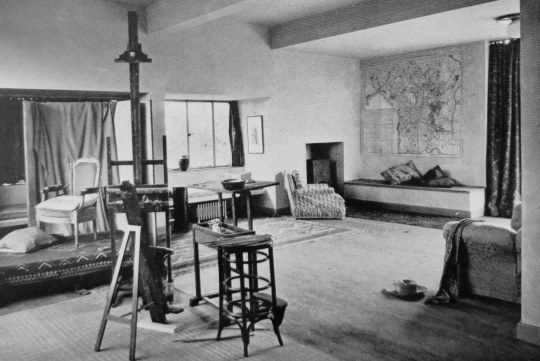
Christopher Nicholson designed many other buildings in his life, but one regarding his death is apt. He designed the building for the London Gliding Club, Tring Road, Dunstable.
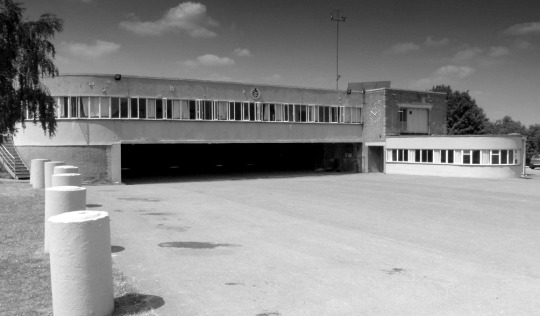
London Gliding Club. Tring Road Dunstable
A gliding enthusiast, Nicholson died at age 44 on 28 July 1948 in a gliding accident during the World Gliding Championships at Samedan in the Graubünden, in Switzerland
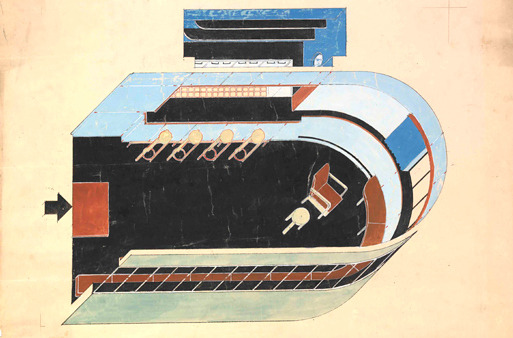
The interior of the bar was designed by Hugh Casson for Christopher Nicholson, about 1935.
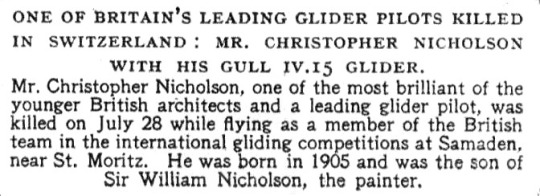
A newspaper clipping reporting Nicholson’s death
‡ The British Art Journal, Volume 2, Issues 1-3, 2000.
† Marketing Modernisms: The Architecture and Influence of Charles Reilly, 9780853237563, 2001
♠ Artists and bohemians: 100 years with the Chelsea Arts Club, 9781870948609, 1991.